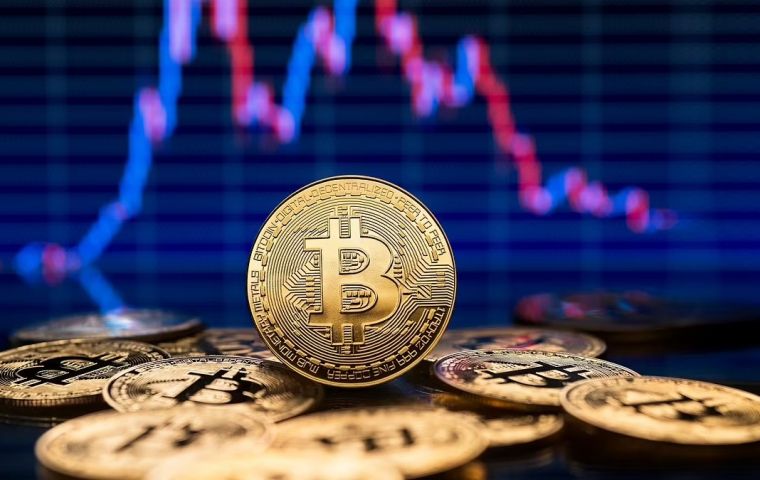MercoPress. South Atlantic News Agency
A Financial Giant Just Kicked Open the Door for Crypto in Latin America
 Photo: Shutterstock
Photo: Shutterstock For years, the financial system in many parts of Latin America has been a story of friction. High inflation eats away at savings, sending money across borders is slow and expensive, and getting access to basic financial services can be a challenge. It’s a tough environment for consumers and an even tougher one for businesses trying to operate on a global scale. This has pushed many to seek out alternatives, creating fertile ground for innovation outside the traditional rails of finance.
Now, one of the biggest names in that traditional system has decided to stop fighting the current and instead build a bridge. Visa just announced a major initiative to bring stablecoin payments to Latin America, partnering with fintech companies to allow for USDC settlement. This move could fundamentally change how money moves in the region, solving real-world problems that have plagued individuals and businesses for decades.
The Problem with Old Money & Associated Payments
Across Latin America, the frustrations stemming from traditional finance are pervasive. The instability of local currencies and troubles with payments make wealth preservation a constant struggle, pushing many to seek alternatives in the digital asset space. This unreliability spills over into digital commerce, turning participation in the global online economy into an uphill battle.
Even straightforward activities, such as funding an account for online entertainment, become complicated, as explored in Coinpoker's guide to the best crypto casinos, which highlights how cryptocurrencies offer a more stable and accessible avenue for online gaming and payment transactions.
This core problem is magnified when it comes to essential transactions. For the millions who rely on remittances, legacy systems with high fees chip away at the money sent home.
This has led to a quiet revolution, with many turning to cryptocurrency, specifically stablecoins, as a way to protect their assets and transact more freely. According to a 2025 job report from the World Economic Forum, tackling this deep-seated economic volatility is one of the region's most pressing challenges. This reality explains why the utility of dollar-pegged digital assets is so immediately obvious to its citizens. They aren't just speculating; they are using this technology for financial self-preservation.
How Visa is Changing the Game
Visa's plan is both simple in its concept and incredibly powerful in its potential execution. The company is leveraging the Solana blockchain to allow for the near-instant transfer of USDC. The choice of Solana is deliberate; the network has been noted by industry analysts at Reuters for its ability to handle a high volume of transactions at a very low cost, making it suitable for payment applications at scale. This means businesses working with Visa's partners can now send and receive cross-border payments in seconds, not days, and for a fraction of the cost.
This isn’t just a small pilot program or a theoretical whitepaper. It's a full-throated endorsement of blockchain technology from a pillar of the financial establishment. By integrating USDC settlement, Visa is directly addressing a huge pain point for merchants and consumers who have been let down by the old ways of doing things. It’s a signal that the future of finance isn’t about choosing between crypto and traditional systems, but about merging them to take advantage of the best features of both.
Empowering a New Digital Economy
The impact of faster, cheaper cross-border payments extends far beyond simple remittances. It has the potential to supercharge the region's burgeoning digital and freelance economies. A software developer in Colombia or a graphic designer in Argentina can now get paid by a client in the United States almost instantly, without losing a significant percentage to intermediary banks and conversion fees.
This isn't just a convenience; it's a growth catalyst. When a small business doesn't have to wait days for an invoice to clear, that capital can be reinvested back into the company almost immediately. It means hiring another employee, buying new software, or launching a marketing campaign that would have otherwise been delayed.
This kind of technological leap is essential for boosting economic opportunity. The International Monetary Fund (IMF) has highlighted that improving the efficiency and accessibility of financial services is key to the region's future. It also de-risks international commerce, encouraging more entrepreneurs to seek out clients beyond their own borders, knowing that the payment side of the equation is finally solved.
By enabling low-cost, real-time payments, this new infrastructure from Visa provides the rails upon which a more dynamic and inclusive digital economy can be built. It allows talent to be monetized globally, irrespective of local banking limitations.
A Bridge Between Two Worlds
What Visa is building is more than just a new payment rail. It's a powerful bridge between the worlds of traditional finance and crypto.
For a long time, these two systems have been seen as competitors, operating in parallel universes with different rules and cultures. This move shows they can be collaborators. It acknowledges the real-world problems that crypto, particularly stablecoins, can solve with remarkable efficiency.
By lending its massive network and trusted brand to this initiative, Visa is giving businesses and consumers the confidence to step into a new, more efficient financial future. It legitimizes the use of stablecoins for everyday commerce and demonstrates a clear path toward a more open and interconnected global economy.
![“Working directly with President [Donald] Trump and Congress, we accomplished what no one else could,” Patel stressed](/data/cache/noticias/108417/130x80/fbi.jpg)



Top Comments
Disclaimer & comment rulesCommenting for this story is now closed.
If you have a Facebook account, become a fan and comment on our Facebook Page!